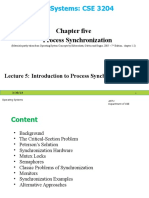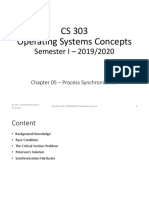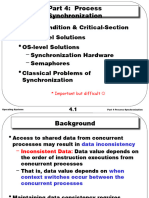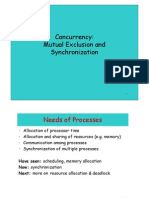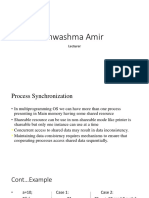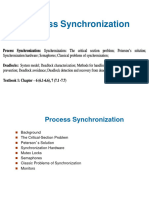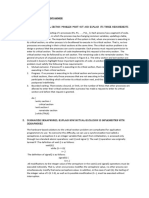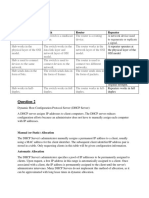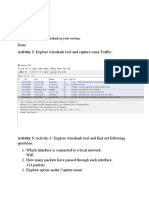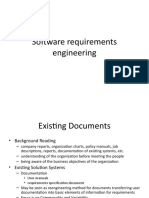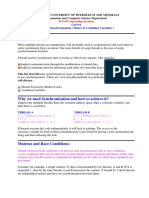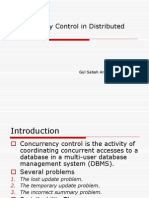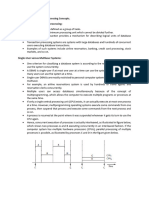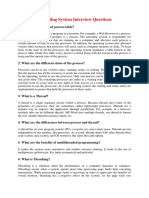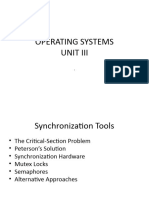0% found this document useful (0 votes)
112 views53 pagesOperating Systems: Process Synchronization
This document discusses process synchronization in operating systems. It introduces the critical section problem where multiple processes need orderly access to shared data. Peterson's solution and synchronization hardware are presented as approaches to solve the critical section problem. Semaphores are also introduced as a synchronization tool that uses wait and signal operations to control access to critical sections without busy waiting. The document provides examples of using semaphores to synchronize processes accessing a shared critical section.
Uploaded by
syed kashifCopyright
© © All Rights Reserved
We take content rights seriously. If you suspect this is your content, claim it here.
Available Formats
Download as PDF, TXT or read online on Scribd
0% found this document useful (0 votes)
112 views53 pagesOperating Systems: Process Synchronization
This document discusses process synchronization in operating systems. It introduces the critical section problem where multiple processes need orderly access to shared data. Peterson's solution and synchronization hardware are presented as approaches to solve the critical section problem. Semaphores are also introduced as a synchronization tool that uses wait and signal operations to control access to critical sections without busy waiting. The document provides examples of using semaphores to synchronize processes accessing a shared critical section.
Uploaded by
syed kashifCopyright
© © All Rights Reserved
We take content rights seriously. If you suspect this is your content, claim it here.
Available Formats
Download as PDF, TXT or read online on Scribd
/ 53


